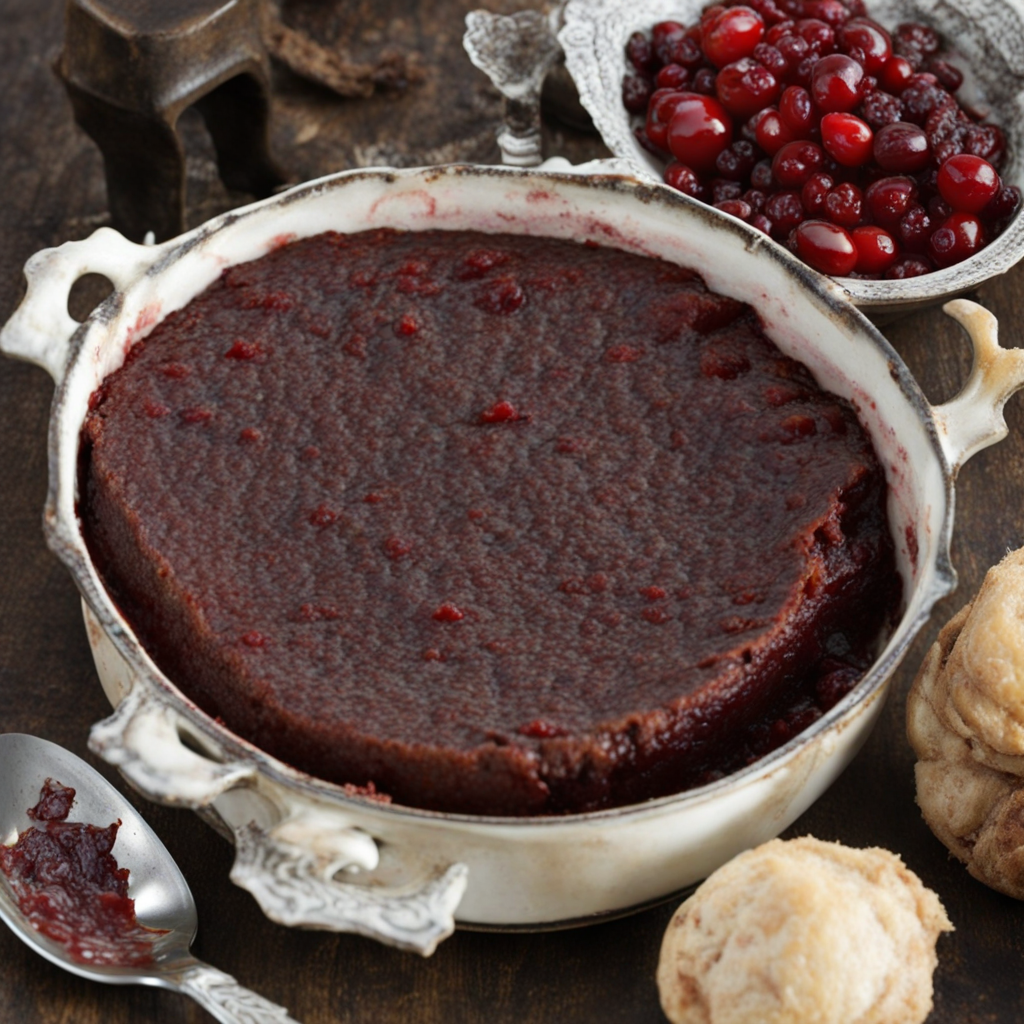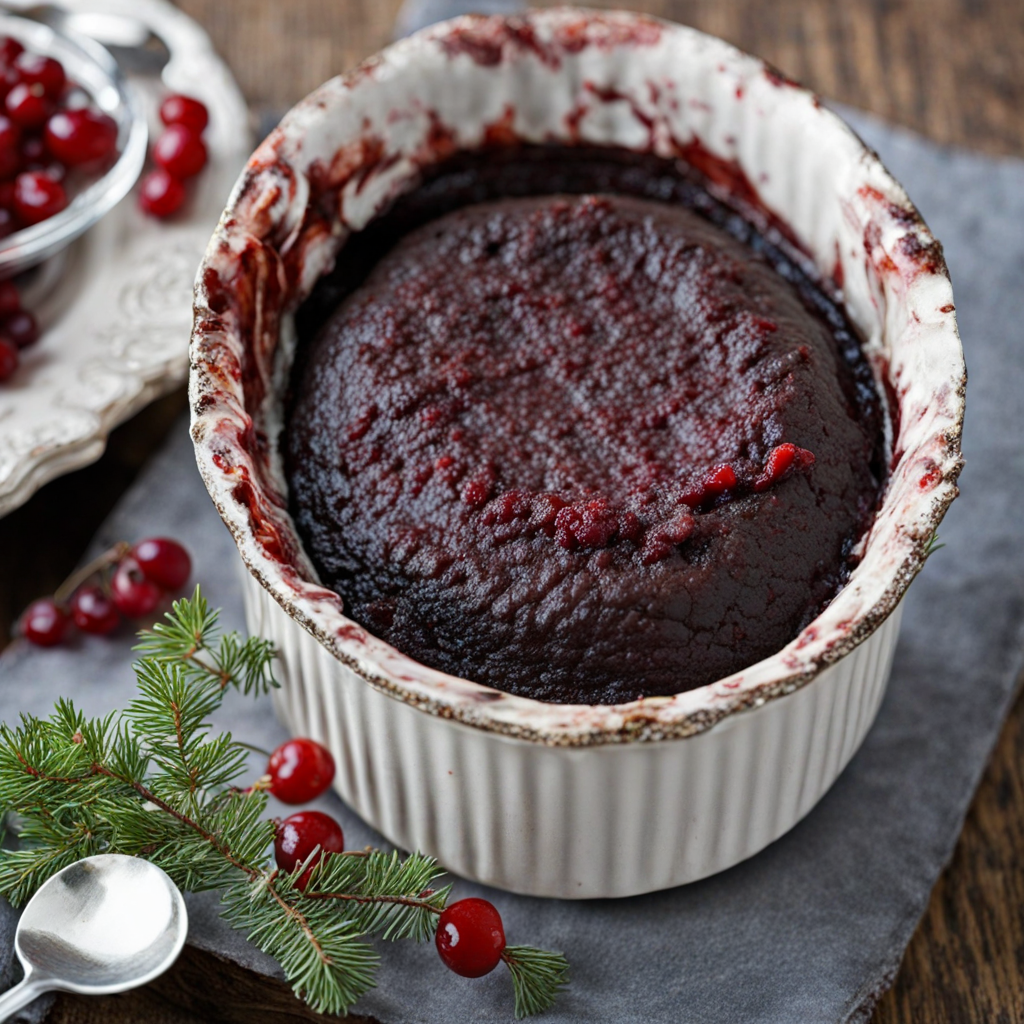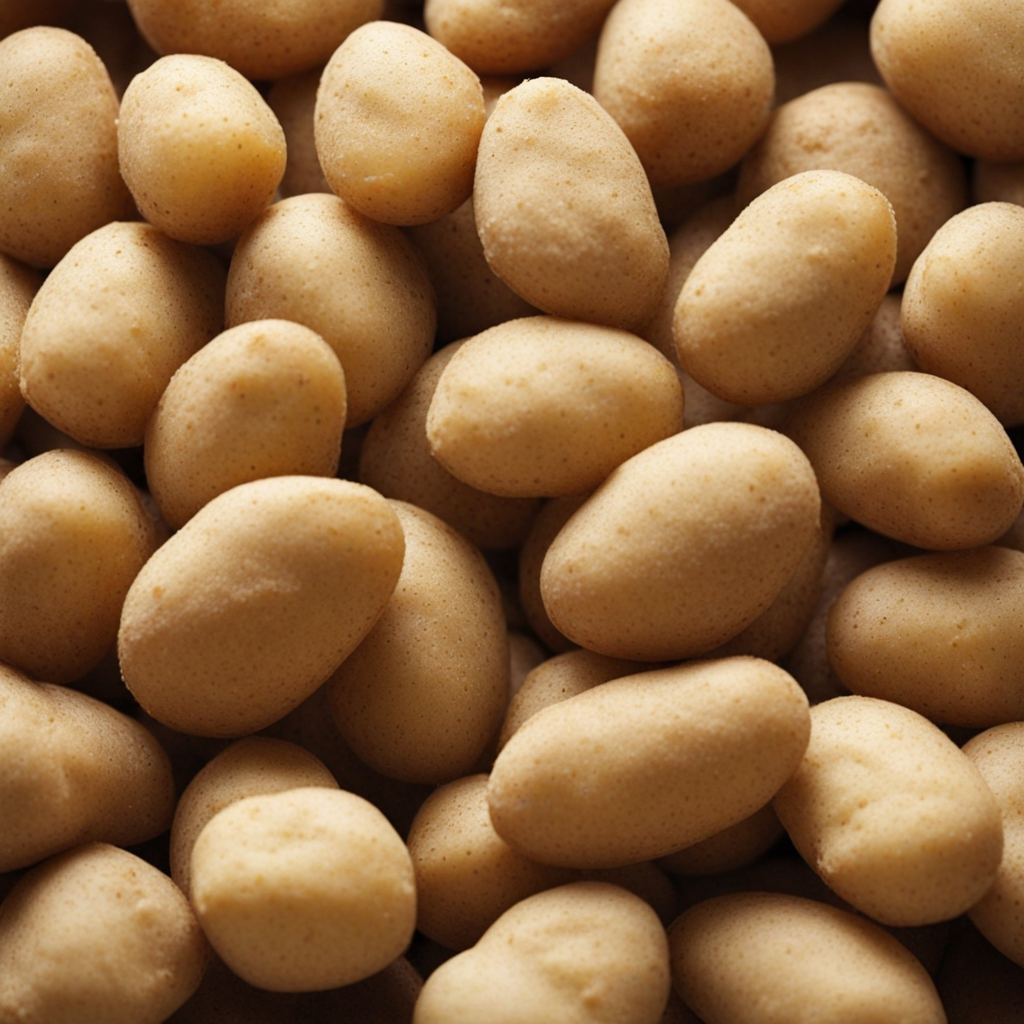Swedish Blood Pudding
Swedish Blood Pudding, known as "blodpudding," is a traditional dish that showcases the resourcefulness of Swedish cuisine, turning what many might consider leftovers into a flavorful meal. This dish is primarily made from pig's blood, flour, and a mix of spices, forming a rich, dark pudding that has a unique, slightly earthy flavor. The pudding is typically steamed or boiled, giving it a soft yet dense texture that can be sliced and served in various ways. Its deep, robust taste is often complemented by a hint of sweetness from added ingredients such as onions or even fruit like apples, which balance the savory elements beautifully. Served warm, Swedish Blood Pudding is commonly accompanied by lingonberry jam, which adds a tart contrast that enhances the overall flavor profile. The jam’s bright acidity cuts through the richness of the pudding, making each bite a delightful interplay of tastes. Additionally, it is often paired with creamy mashed potatoes or sautéed vegetables, providing a hearty and comforting meal that is both nourishing and satisfying. The presentation is simple yet inviting, showcasing the pudding's dark hue alongside the vibrant red of the lingonberries. Despite its unconventional ingredients, Swedish Blood Pudding is a beloved comfort food in Sweden, often enjoyed during special occasions or family gatherings. It embodies a sense of tradition and nostalgia, as many families have their own cherished recipes passed down through generations. For those adventurous enough to try it, the dish offers a unique culinary experience that reflects Sweden's rich agricultural heritage and the importance of utilizing every part of the animal, making it not only a dish for the palate but also one steeped in history and culture.
How It Became This Dish
Blodpudding: A Culinary Journey Through Swedish History Blodpudding, or blood pudding, is a traditional Swedish dish that embodies the intersection of culture, history, and culinary practice. This distinctive food, made primarily from pig's blood, flour, and various spices, has deep roots in Sweden's rural past and remains significant in its contemporary food culture. The evolution of blodpudding is a fascinating story of necessity, resourcefulness, and adaptation to changing times. #### Origins and Early History The origins of blodpudding can be traced back to ancient food preservation techniques. In many cultures, blood was historically utilized not just as a source of nutrition but also as a means of preserving meat. The tradition of blood pudding is believed to have emerged in the Viking Age when resources were scarce, and every part of an animal was utilized to avoid waste. Blood was one of the most nutrient-rich components, providing essential proteins and iron, making it an invaluable food source for the harsh Nordic climate. In Sweden, the making of blodpudding became a common practice among rural communities. The dish was seen as a practical solution to utilize the whole animal, particularly during the slaughtering season in autumn when families would process pigs for the winter. The blood would be mixed with rye or barley flour, spices, and sometimes onions, creating a thick batter that could be cooked into a pudding. This rustic culinary tradition was not just about sustenance; it was also a communal activity, often involving families and neighbors coming together during the pig slaughtering season. #### Cultural Significance Blodpudding holds a special place in Swedish culture, symbolizing the resourcefulness and frugality of rural life. In a society that has historically relied on agriculture and animal husbandry, the ability to transform what was once seen as offal into a cherished dish is a testament to the ingenuity of Swedish cooks. The dish is often served with lingonberry sauce, which adds a sweet counterpoint to the richness of the pudding, reflecting the balance that is a hallmark of Swedish cuisine. Moreover, blodpudding is featured prominently in Swedish traditions and celebrations. It is sometimes served during the festive season, particularly around Christmas, and is a staple in many household recipes. Its presence in local food markets and restaurants highlights a growing appreciation for traditional foods in a modern context. The dish is often associated with "husmanskost," or traditional Swedish home cooking, which emphasizes hearty, simple meals that reflect the local landscape and agricultural practices. #### Development Over Time Throughout the 19th and 20th centuries, blood pudding saw various adaptations as Swedish society underwent significant changes. The rise of industrialization and urbanization transformed food production and consumption patterns. As people moved from rural areas to cities, traditional recipes began to evolve. Blodpudding was no longer solely a rural dish; it began to appear in urban households and restaurants, albeit with some modifications. In urban settings, the availability of ingredients and the influence of international cuisines led to variations of the traditional recipe. While the basic components remained largely the same, urban cooks experimented with additional spices, herbs, and even different types of flour, reflecting the multicultural aspects of the growing cities. The rise of convenience foods also impacted how blodpudding was prepared. Pre-packaged versions became available in grocery stores, making it easier for busy families to enjoy this traditional dish without the time-consuming preparation. In the latter half of the 20th century, a renewed interest in traditional foods emerged as part of a broader movement emphasizing local, sustainable, and artisanal food practices. Chefs and food enthusiasts began to explore the roots of Swedish cuisine, leading to a resurgence of traditional dishes like blodpudding. This revival was not only about nostalgia but also about reconnecting with the land and the history of food production in Sweden. Farmers' markets, food festivals, and culinary schools began to feature blodpudding, celebrating its rich history and encouraging new generations to appreciate this unique dish. #### Modern Day Blodpudding Today, blodpudding is enjoyed throughout Sweden and has regained its status as a beloved comfort food. It is often featured on menus in traditional Swedish restaurants and is a popular choice for home cooking. The dish can be prepared in various ways, from pan-frying slices until crispy to baking it in the oven. The versatility of blodpudding means it can be served as a main dish or as part of a smörgåsbord, a traditional Swedish buffet that includes various cold and hot dishes. Blodpudding is also a staple in Swedish school lunches, introducing children to traditional flavors from an early age. This practice helps to instill an appreciation for the country’s culinary heritage, fostering a sense of pride in Swedish food culture. Additionally, the dish's nutritional profile, rich in iron and protein, makes it a valuable part of a balanced diet, particularly for growing children. Furthermore, as a reflection of contemporary culinary trends, some chefs are reimagining blodpudding in innovative ways, incorporating it into more modern dishes or pairing it with contemporary ingredients. This fusion of old and new demonstrates the adaptability of Swedish cuisine and its ability to evolve while maintaining a connection to its roots. #### Conclusion Blodpudding is more than just a dish; it is a cultural artifact that tells the story of Sweden’s rural heritage and the evolution of its culinary practices. From its humble origins as a necessity in the agricultural communities of the Viking Age to its place in modern Swedish cuisine, blodpudding is a symbol of resourcefulness, tradition, and community. As Sweden continues to embrace its culinary history while adapting to the modern world, blodpudding stands as a testament to the enduring nature of traditional foods and their significance in shaping cultural identity. Whether enjoyed in a cozy home or at a bustling restaurant, this beloved dish remains a delicious link to Sweden's past, present, and future.
You may like
Discover local flavors from Sweden







